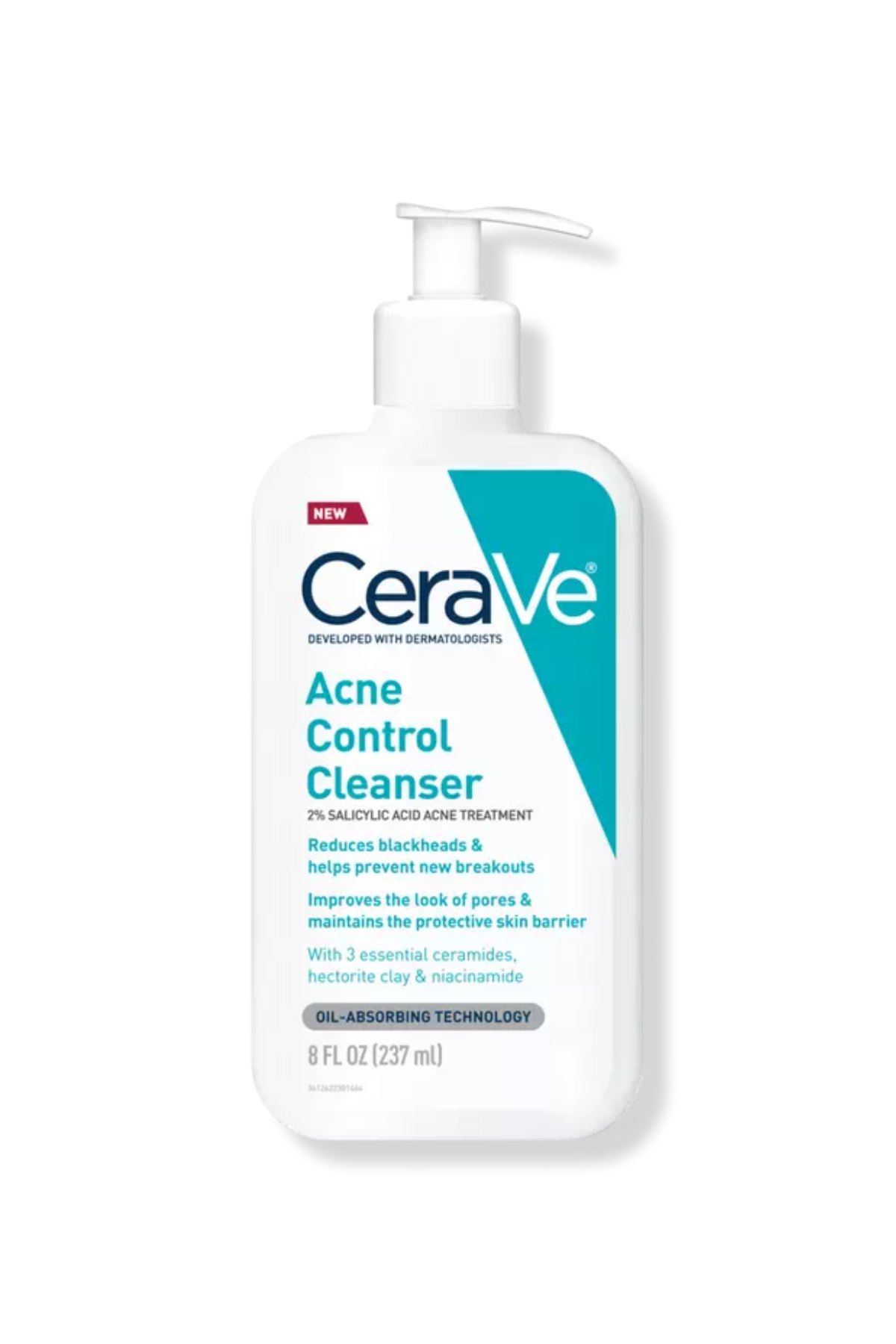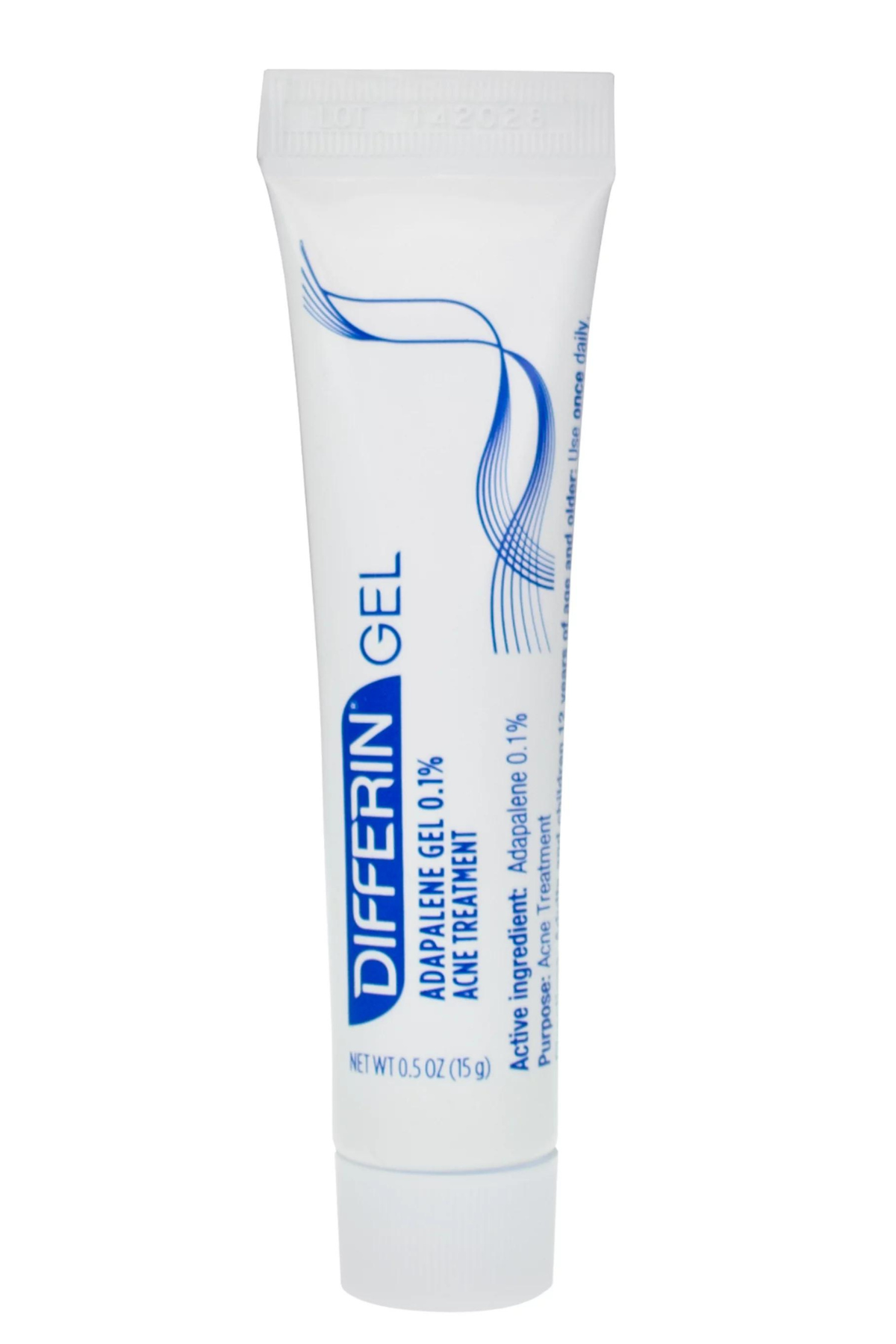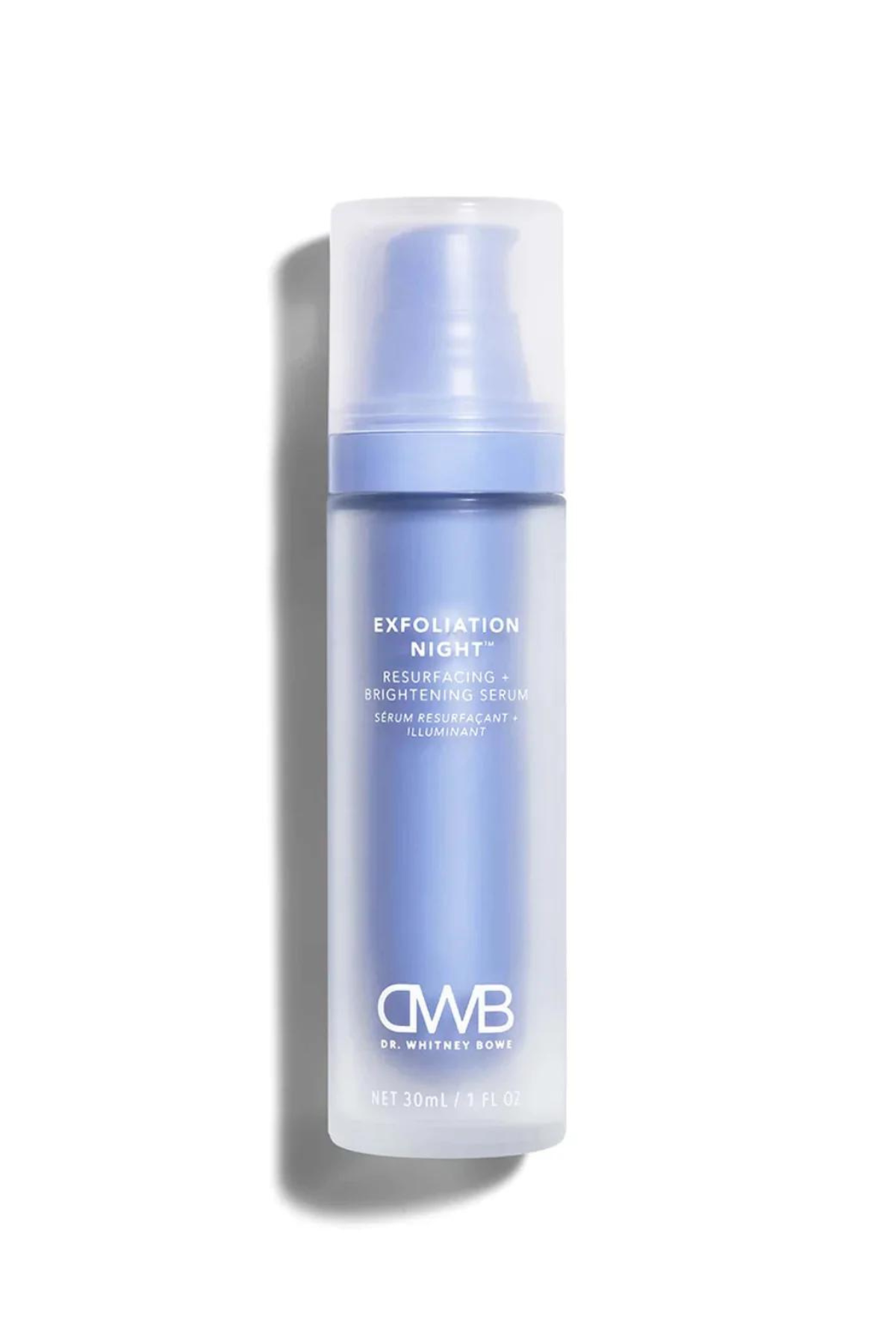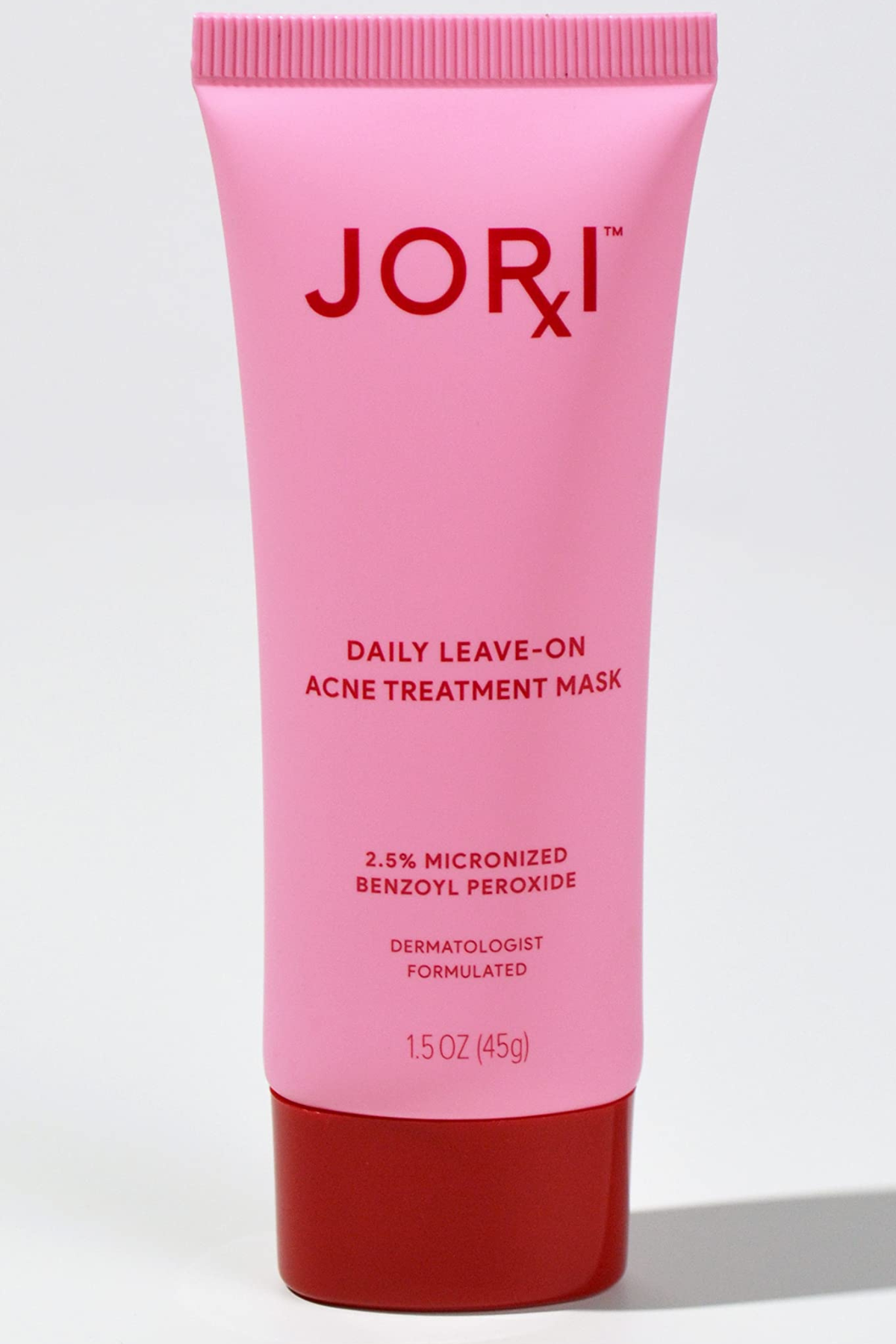Adult Acne: Your One-Stop-Shop Guide
Post-puberty breakouts are totally normal—and treatable.
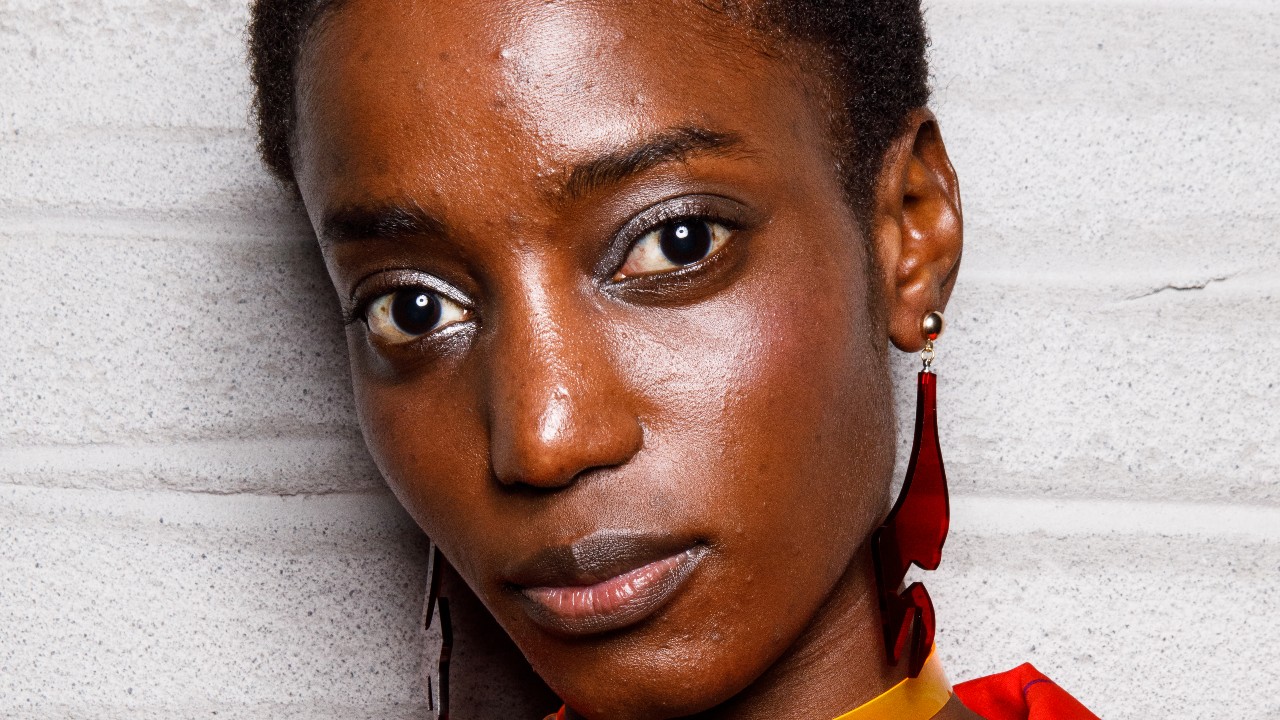

I had the utmost pleasure of dealing with pretty severe acne circa middle school. Really, truly, the most fun. Fast forward through a little hormone regulation, some acne scar treatments, and the realization that throwing the kitchen sink at my face was not the solution, and my skin cleared up. Well, kind of, sort of. It’s more manageable, but, in my mid-20s, I’m still blessed with cysts along my jawline and inflamed, pus-filled pimples. It’s adult acne at its finest—a condition that approximately 15 to 50 percent of people over the age of 25 have to deal with. While my breakouts never really went away, it’s just as common to experience your first bout of full-fledged acne during adulthood.
It can be tricky to nail down exactly what prompted adult acne to come to fruition, but dermatologists agree that it’s typically rooted in hormonal fluctuations (read: pregnancy, stress, changes in medication). “Adult acne is similar to other types of acne in that it is caused by the clogging of pores and the overproduction of oil, but it's mainly hormonal and linked to changes at different stages in your life,” says Dr. Shereene Idriss, Board-certified Dermatologist, Founder of Idriss Dermatology in NYC, and creator of the #PillowtalkDerm series on Instagram. As such, getting flares under control is going to have a little less to do with reducing oil production and a little more to do with medications and lifestyle changes. To get allll the info, I tapped a handful of top dermatologists. Here, they’re running through what causes adult acne, how to treat it, and more.
What Is Adult Acne?
Contrary to popular belief, you don’t always just outgrow your acne once you graduate high school. Your breakouts can be persistent and follow you well into your adult years, or your journey with acne can have a delayed start. “Late-onset acne appears after the age of 25 with no history of adolescent acne,” says Dr. Robyn Gmyrek, a board-certified dermatologist at Union Square Dermatology.
Regardless of whether your acne never left or spontaneously arrived, you’re not alone. It’s actually pretty common—especially in women. “It’s estimated to affect 51 percent of women in their 20s, 35 percent of women in their 30s, and 26 percent of women in their 40s,” explains board-certified dermatologist Dr. Joshua Zeichner.
What Does Adult Acne Look Like?
“Adult acne tends to be generally mild to moderate in severity and to present with more inflammatory, red papules and fewer blackheads or whiteheads compared to adolescent acne,” explains Dr. Gmyrek. The location in which adult acne pops up is also going to be fairly distinctive—it’s primarily located in places that have less oil glands and, interestingly enough, are more prone to dryness. “It generally affects the lower face, particularly the jaw, the zone below the jawline, the neck, and sometimes the chest.”
What Causes Adult Acne?
Well, it’s complicated. And to be honest, there’s no hard and fast answer. “The pathogenesis of adult acne is very complex and remains incompletely elucidated,” says Dr. Gmyrek. “Genetics, the usage of occlusive cosmetics, oral or topical medications, diet, smoking, and chronic stress all have been noted as possible causes or triggers for adult acne.” Here, we’re breaking down a handful of possible causes, but please consult with your dermatologist if you’re looking for a personalized diagnosis.
Hormones
This is by and large the most common adult acne trigger. “Changing hormone levels due to menstruation, pregnancy, menopause, or discontinuing or starting birth control pills can cause adult acne,” explains Dr. Idriss. Reason being, these life events switch up the level of androgen and estrogen flowing through your body. All of these changes can have an impact on the way your skin functions. “Androgen hormones like testosterone, have a significant impact on oil glands,” explains Dr. Zeichner. With more oil, you’ll consequently have more inflammation—both which can lead to the development of acne.
Get exclusive access to fashion and beauty trends, hot-off-the-press celebrity news, and more.
Genetics
You’re going to hate this answer, but your adult acne could just be in your blood. “Those with adolescent acne and a strong family history are more likely to have adult acne,” explains Dr. Gmyrek. Why is this the case? There’s not too much research to explain the ins and outs (le sigh), but a connection has been established.
Heavy Creams
When sudden acne occurs, it’s time to take a close look at any new products that have made their way into your routine—one of them could be the culprit. “Hair products, skincare products, and makeup which are comedogenic can clog pores and cause acne,” says Dr. Gmyrek. Be on the lookout for products containing oils, like coconut oil, olive oil, mineral oil, or jojoba oil, vitamin E, petrolatum, and silicones.
Medications
Do a status check on any new medication in your routine. “Oral medications, including corticosteroids, anabolic steroids, and lithium, can also cause acne,” says Dr. Gmyrek.
Diet
I like sugar and sweets as much as the next person, but unfortunately all those brownies and cookies and sugary fruits could be the source of your cystic breakouts. “Diet, which can influence inflammation throughout the body, can cause acne. Studies have shown that sugary products, sugary beverages, high-glycemic-index foods and milk (particularly skimmed milk) was consistently found to be associated with the presence of acne,” says Gmyrek. Dr. Zeichner adds that whey protein and vitamin B12 have also been linked to breakouts.
Stress
Run a bath and turn on your Calm app—a highly stressful time or situation could cause your skin to go haywire. “Physical and mental stress increase cortisol and androgen hormone production. These hormones stimulate the oil glands and hair follicles in the skin, which can lead to acne. Stress also activates the immune system, which can promote inflammation,” says Dr. Gmyrek.
How to Treat Adult Acne
Treatment, in large part, is going to depend on what’s causing your adult acne. For some, simply switching out a comedogenic moisturizer might do the trick, while others will need a prescription from a dermatologist. For the best course of action, consult with your doctor.
Pick Oil-Free Products
Controlling teenage acne is typically all about controlling oil production with topicals—that’s not necessarily the case with adult acne. “Adult acne should be approached less aggressively with topical products in adulthood, versus adolescence, as the skin tends to be less oily overall,” says Dr. Gmyrek. That said, you'll still want a lineup of products that are non-comedogenic and oil-free. Steer clear of facial oils and heavy creams.
Choose Skincare With Acne-Fighting Ingredients
More mature skin is still going to need a hefty dose of hydration—skin gets drier with age. But if you run on the oily side or find yourself dealing with whiteheads or blackheads, acne-fighting ingredients can be a saving grace. “Benzoyl peroxide, salicylic acid, and retinol are three ingredients you should definitely incorporate into your routine if you have acne,” says Dr. Idriss. “Benzoyl peroxide works by killing the bacteria that can contribute to the development of acne and by reducing inflammation. Salicylic acid is a beta hydroxy acid (BHA) that works by exfoliating the top layer of skin and by breaking down the bonds that hold dead skin cells together—this helps to unclog pores and prevent the formation of acne. Retinol is a vitamin A derivative with powerful skin-renewing properties. By increasing the turnover of skin cells, it helps to unclog your pores and clear your skin.” All sounds pretty good, right?
Aside from the big three, you can also look for products with niacinamide, which can control oil and decrease inflammation, as well as sulfur, which will likely be non-irritating for those with sensitive skin.
Eat a Low-Sugar Diet
Because sugary foods can cause breakouts, it’s best to limit them on your journey towards clear skin. “It is thought that sugary foods and milk raise levels of a hormone called Insulin Like Growth Factor (IGF) which leads to inflammation in the body and stimulates the production of androgen hormones, which are associated with the production of oil and the development of acne,” explains Dr. Gmyrek. As such, eating a low inflammatory, sugar-free diet can help keep your hormones in check and your breakouts at bay.
See a Dermatologist
Under no circumstances can you go wrong seeing a dermatologist. They’ll always know best and be able to give you accurate and personalized recommendations. But if you’ve been self-treating with over-the-counter products for a little more than a month and see zero progress, it’s 100 percent time to make an appointment—you may need something stronger. “Prescription, topical or oral medications might be needed to help get the skin under control,” says Dr. Zeichner.
There’s also the possibility that there’s an underlying systemic issue causing your acne, and as such, a doctor’s diagnosis is imperative. “If you note hair loss on your scalp, excess hair growth on the face or chest, irregular menstrual cycles, or rapid weight gain or loss in addition to persistent acne, you should seek medical consultation and be evaluated for polycystic ovarian syndrome, or other endocrine disorders,” says Dr. Gmyrek.
Try a Prescription Topical
The products you scoop up at the store may just do the acne-fighting trick, but it’s also possible you need the heavy duty stuff. Your dermatologist can write a prescription for a serum, gel, cream, or pad that comes at higher, stronger concentration than you can buy on your own. Dr. Gmyrek explains that she might consider giving an adult acne patient a stronger retinoid, a topical antibiotic lotion or pad, prescription strength azelaic acid (it unclogs pore and decreases post-inflammatory pigmentation), topical dapsone (which is anti-bacterial and decreases inflammation), or something called Winlevi. “It’s a one percent topical androgen inhibitor that targets the acne hormones in the skin, decreases sebum production and reduces inflammation. It can help treat your acne, but the exact way it works is unknown.”
Try an Oral Prescription
If your breakouts fall more into the cystic or inflammatory papule category (think: deep and painful) and are hormonal in natural, an oral prescription might be the solution. Dr. Gmyrek explains that options run the gamut and the right medication will be decided by your dermatologist. For some, a short-term antibiotic like doxycycline or seysara, which are used to kill bacteria and decrease inflammation, can be useful to get breakouts under control in a short amount of time.
But in the long run, your doctor might want you on a different form of hormonal regulator, like oral contraceptives, aka birth control, or Spironolactone. “Spironolactone is an effective treatment for women suffering with adult hormonal acne,” explains Dr. Idriss. “It works by blocking the effects of androgens, the hormones that contribute to the development of acne.”
An additional option is to go on Accutane, or oral isotretinoin. “This is an oral retinoid which can decrease oil gland production. It can give a longer-term remission of acne but requires a five to six month course and monthly monitoring for side effects,” adds Dr. Gmyrek. For more information on Accutane, read our comprehensive guide.
Consider a Laser
Historically, lasers were reserved for treating post-inflammatory hyperpigmentation (the dark marks left behind by acne), but thanks to new advancements, there is now a laser that actually targets active acne. It’s called Aviclear and it “targets the sebaceous glands with laser light,” says Dr. Gmyrek. It requires three treatments, three weeks apart—and the results are promising. “80 percent saw 50 percent of acne clear at three months and 87 percent had 50 percent of acne cleared at six months,” she adds. Plus, it can be used on all skin types and tones.
Spontaneous Recovery
I wouldn’t recommend just sitting and waiting until your adult acne poofs and disappears—but it does happen. “Some people can eventually snap out of it,” says Dr. Idriss. While you can get clear skin out of left field, it’s still important to have a solid routine or you’ll be left with residual marks, scarring, and post-inflammatory hyperpigmentation. “A targeted skincare routine is important to help control and minimize unwanted effects.”
On the flip side, if medication has your acne under control, don’t take that as a sign to go cold turkey. “The biggest mistake you can make is to stop using your medications after your face clears. If you stop using your medications, your skin will go back to do what it is genetically programmed to do, leading to breakouts,” says Dr. Zeichner.
Meet the Dermatologists
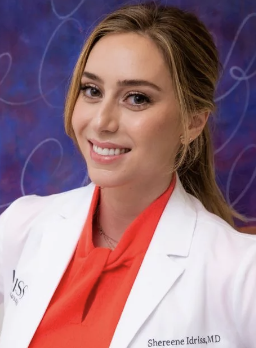
Shereene Idriss, M.D. is a board-certified dermatologist and an expert in facial rejuvenation, as well as minimally invasive body contouring. After graduating magna cum laude from the seven-year Medical Honors Program at The George Washington University, Dr. Idriss completed a research fellowship at Harvard University, and finalized her dermatology training at Tufts Medical Center in Boston before relocating to New York City. In a world amped up on filters, Dr Idriss embraces spotlighting her patients’ unique facial features rather than morphing them into someone else. With this philosophy in mind, she has developed and practices a multi-dimensional approach that addresses the major issues associated with aging: volume displacement (i.e. sagging), skin discoloration, loss of inherent elasticity and textural changes (including wrinkles). She emphasizes understanding the overall needs of her patients and how they feel and perceive themselves inside and out; this allows her to better understand where they are coming from, what they truly want and which procedures will work best for them. She strives to combine a strong doctor-patient connection with her medical expertise, experience with lasers and other energy devices, and artistic skills to achieve the best possible aesthetic results and patient care. Dr. Idriss is currently a Clinical Instructor in Dermatology at the Icahn School of Medicine at Mount Sinai and before that she was a Clinical Assistant Professor of Dermatology at NYU. Dr. Idriss is also a fellow of the American Academy of Dermatology, the American Society for Dermatologic Surgery, the Dermatologic Society of Greater New York, and the Women’s Dermatologic Society. She has published several research papers including award-winning publications on the evolution of dermatology in the digital age, which have set the foundation of her #PillowtalkDerm series on YouTube and Instagram
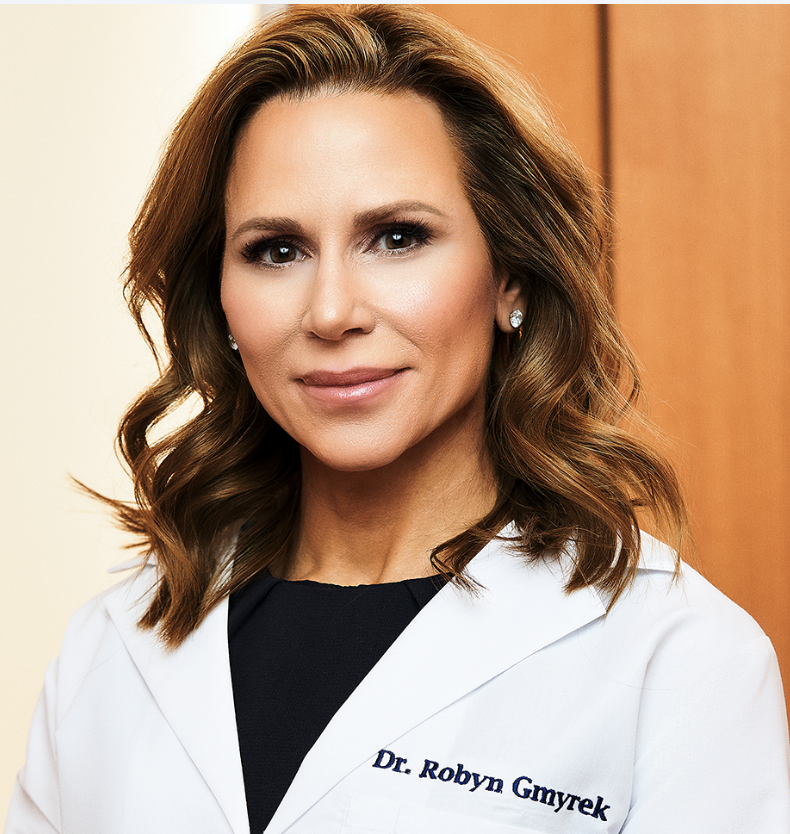
Dr. Robyn Gmyrek is a Board Certified dermatologist that has received national recognition for her contributions to cosmetic dermatology, including Castle and Connolly America’s Top Doctors, New York Magazine’s 2013-2020 Best Doctors, and inclusion in the 2013-2020 lists of Super Doctors. Before joining UnionDerm Dr. Gmyrek was on the faculty of Columbia University Medical Center where she was Division Chief of Cosmetic Dermatology and founded Columbia University’s Cosmetic Skin and Laser Center. At Columbia, Dr. Gmyrek also was the Director of the Resident Cosmetic Clinic, instructing the resident physicians in cosmetic procedures, and was in charge of the Fourth Year Medical Student Electives in Dermatology. Dr. Gmyrek received her Bachelor’s degree from New York University where she graduated Phi Beta Kappa and Magna Cum Laude. She went on to complete her medical school education at Columbia University, College of Physicians and Surgeons. After graduation, she finished an internal medicine internship at Cornell University – New York Hospital. Dr Gmyrek then returned to Columbia’s College of Physicians and Surgeons where she completed her dermatology residency training, served as Chief Resident in Dermatology, and in 2000 joined the full time faculty of the Department of Dermatology. Dr. Gmyrek specializes in cosmetic and general dermatology. She has lectured nationally on techniques including laser surgery, Botox injections, sclerotherapy for leg vein removal and filler injections for correction of wrinkles. Dr. Gmyrek combines her dermatologic medical knowledge and compassionate nature to provide comprehensive treatments to patients. Moreover, she is a frequent contributor to national skin care and beauty media, including: Allure, SELF, The Coveteur, Health, and Oprah.com. Dr. Gmyrek is a Diplomate of the American Board of Dermatology and an active member of the American Academy of Dermatology, the American Society of Dermatologic Surgery, the Women’s Dermatologic Society, the New York Dermatologic Society and the American Society for Laser Medicine and Surgery.
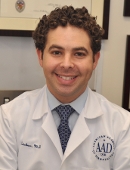
He is Board Certified in Dermatology and considered one of the country's key opinion leaders in treating acne and rosacea and is an expert in cosmeceuticals, skin care, and cosmetic Dermatology. He is actively engaged in clinical research, and his work has been published in the top peer-reviewed Dermatology journals. As an educator, Dr. Zeichner trains residents and medical students and regularly lectures to international audiences at the major Dermatology meetings. He is frequently called on by the media for his expert opinion, and he can be found quoted in national magazines and newspapers, including Allure, Vogue, Cosmopolitan, Elle, Glamour, and The New York Times. In 2015, he was awarded a prestigious Elle Magazine Skin Genius Award for his innovative approaches in treating aging skin. Dr. Zeichner has been voted by his peers to New York Magazine’s Best Doctors lists since 2018 and is consistently ranked as one of the New York Metro Area’s Top Doctors by Castle Connolly and New York City Super Doctors published annually in The New York Times Magazine.

Samantha Holender is the Senior Beauty Editor at Marie Claire, where she reports on the best new launches, dives into the science behind skincare, and shares the breakdown on the latest and greatest trends in the beauty space. She's studied up on every ingredient you'll find on INCI list and is constantly in search of the world's glowiest makeup products. She's constantly tracking the biggest nail and hair trends to pop up in the beauty space, going backstage during fashion weeks, tracking celebrity looks, and constantly talking to celebrity hair stylists, nail artists, and makeup artists. Prior to joining the team, she worked as Us Weekly’s Beauty and Style Editor, where she stayed on the pulse of pop culture and broke down celebrity beauty routines, hair transformations, and red carpet looks. Her words have also appeared on Popsugar, Makeup.com, Skincare.com, Delish.com, and Philadelphia Wedding. Samantha also serves as a board member for the American Society of Magazine Editors (ASME). She first joined the organization in 2018, when she worked as an editorial intern at Food Network Magazine and Pioneer Woman Magazine. Samantha has a degree in Journalism and Mass Communications from The George Washington University’s School of Media and Public Affairs. While at GWU, she was a founding member of the school’s HerCampus chapter and served as its President for four years. When she’s not deep in the beauty closet or swatching eyeshadows, you can find her obsessing over Real Housewives and all things Bravo. Keep up with her on Instagram @samholender.
